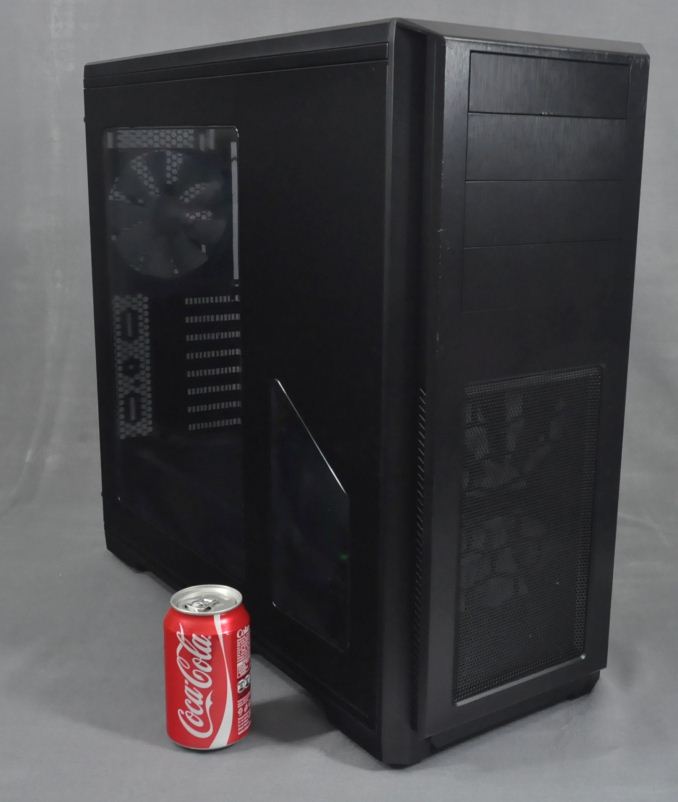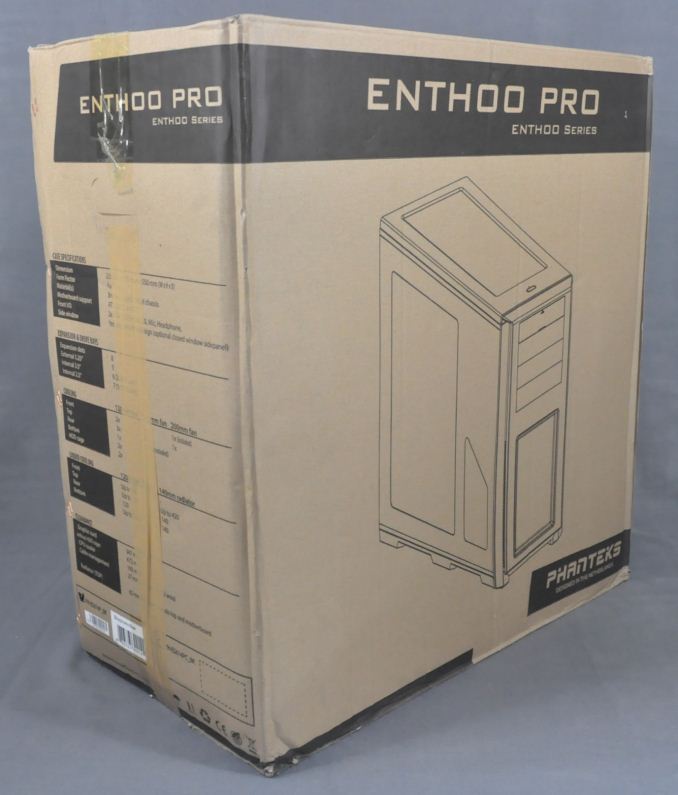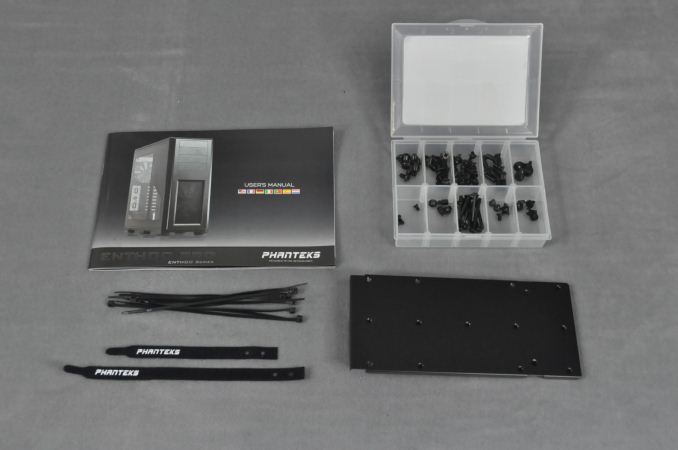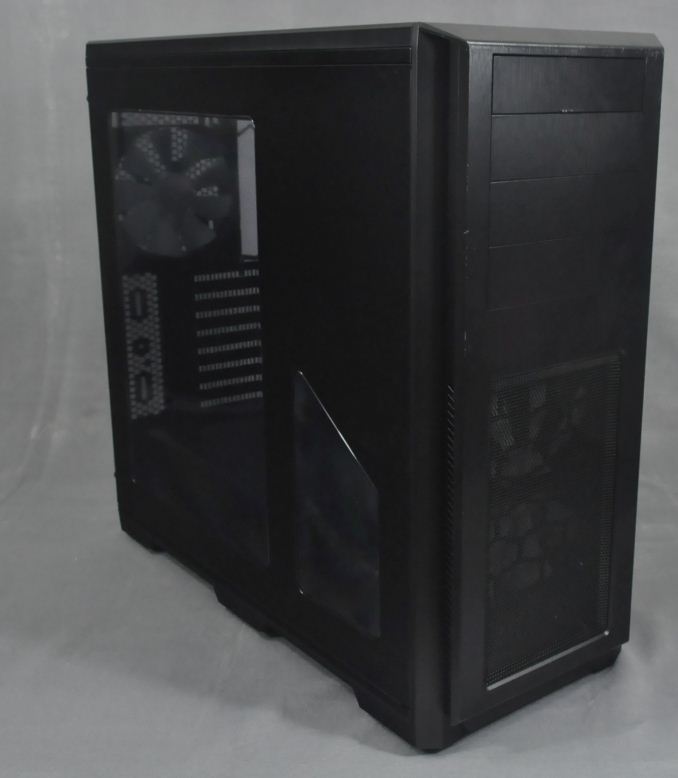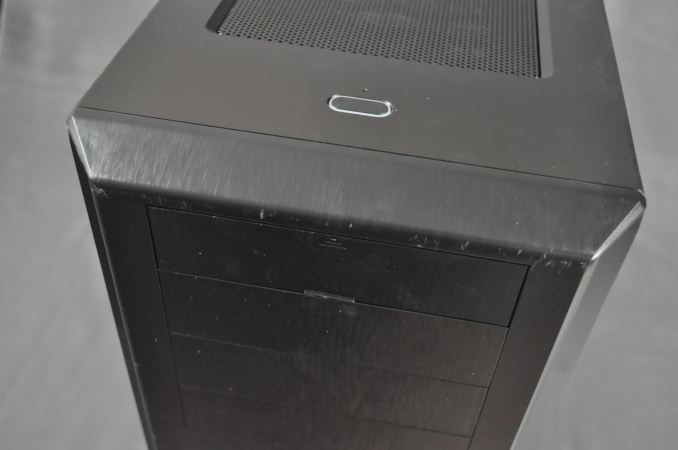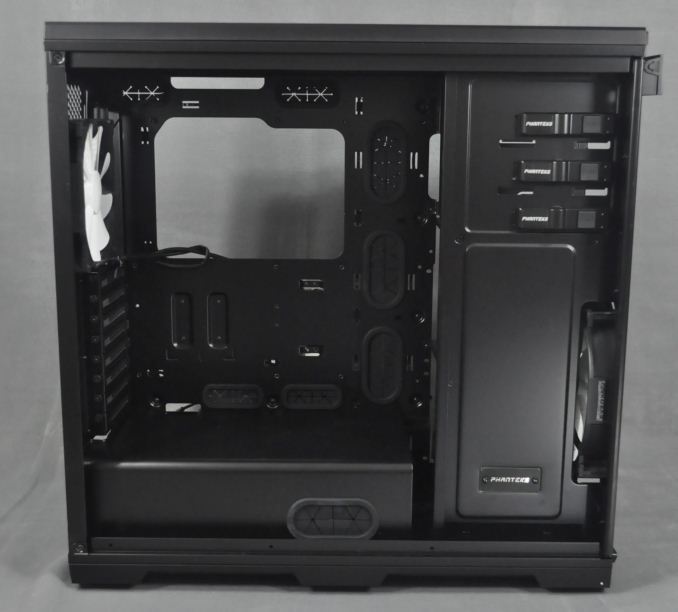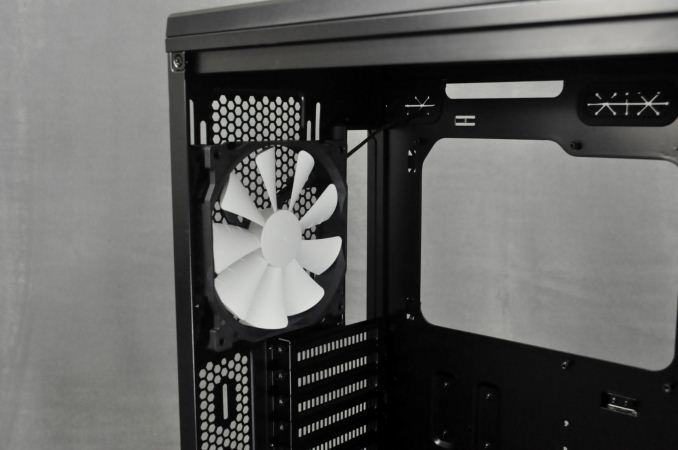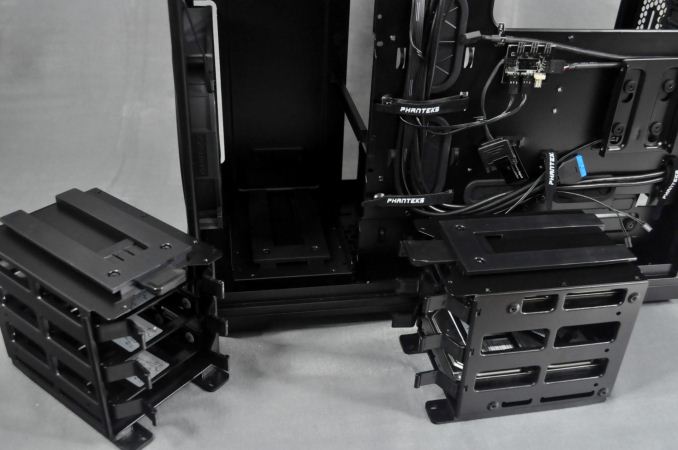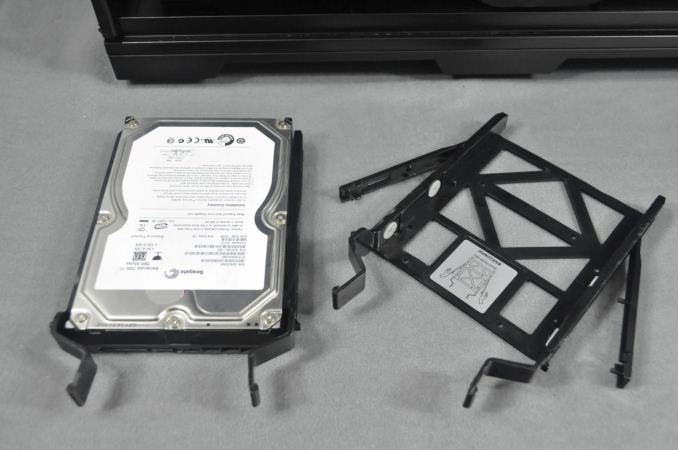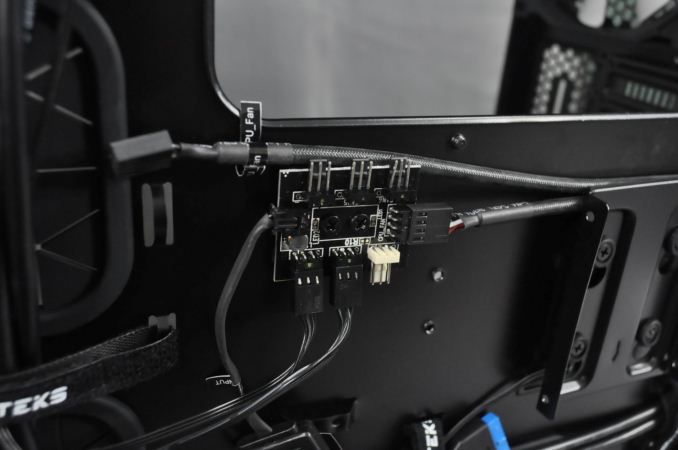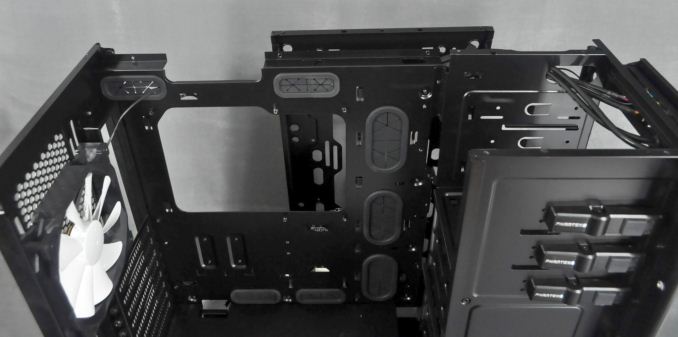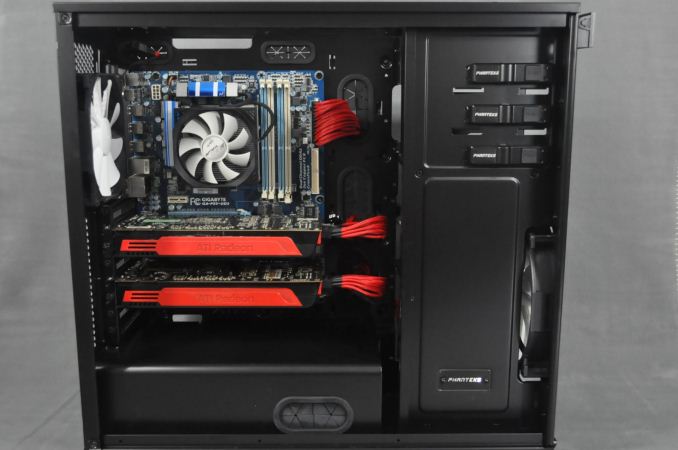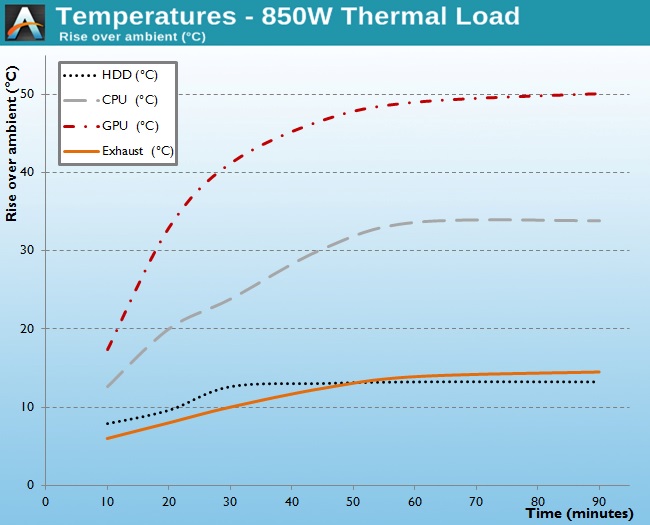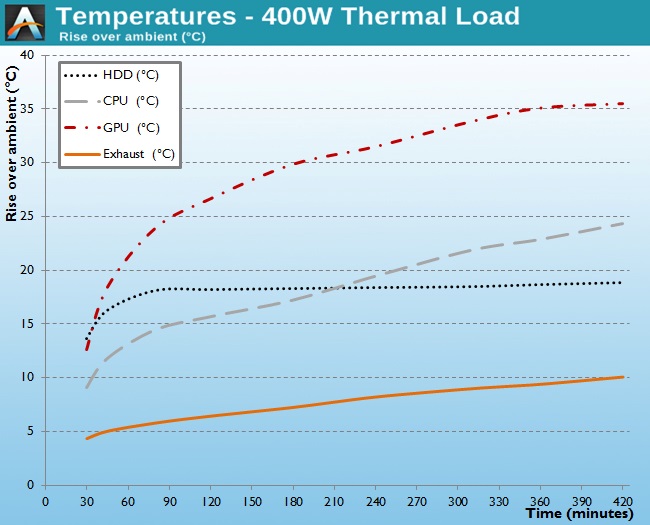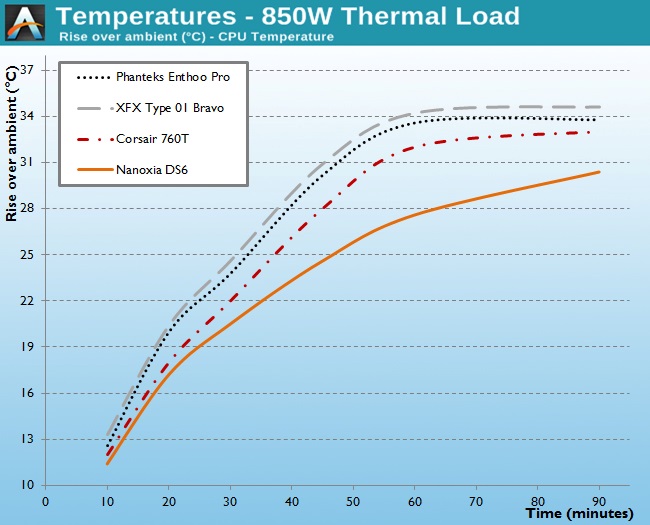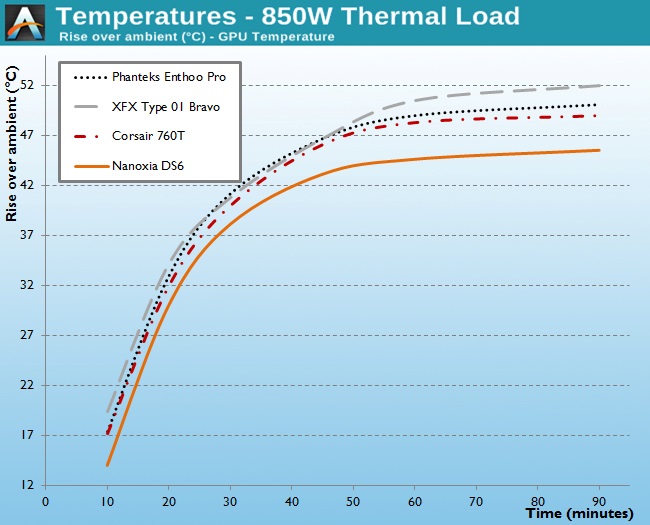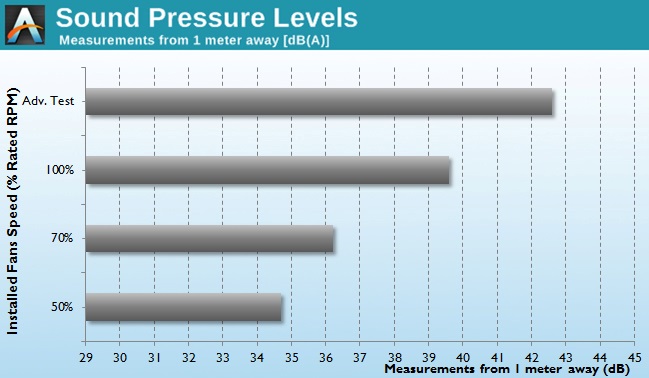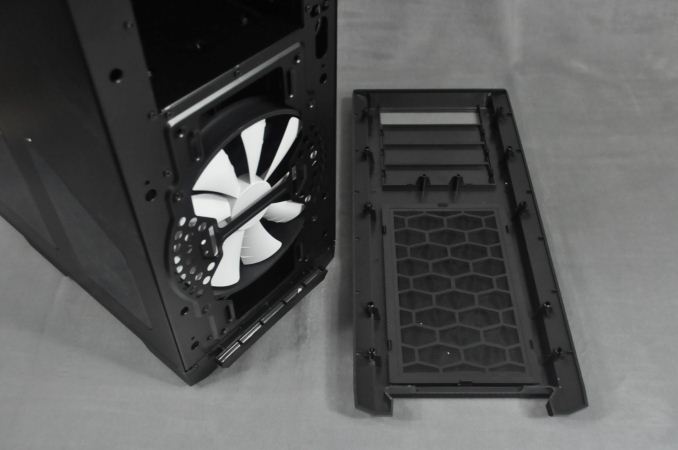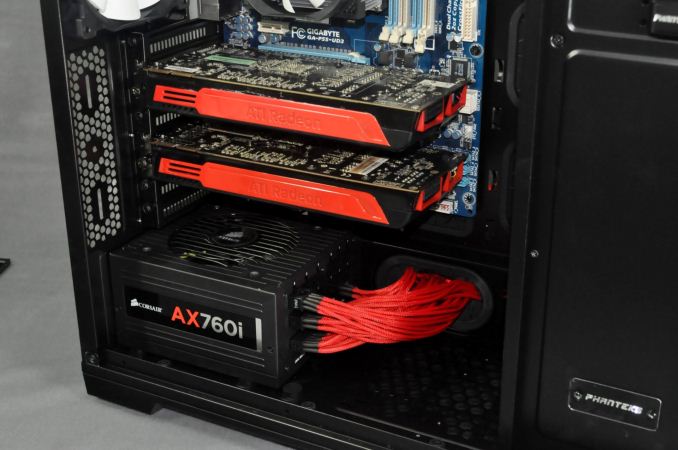
Original Link: https://www.anandtech.com/show/9062/phanteks-enthoo-pro-case-review
The Phanteks Enthoo Pro Case Review
by E. Fylladitakis on March 30, 2015 8:00 AM EST- Posted in
- Cases/Cooling/PSUs
- Full-Tower
- Case
- Phanteks
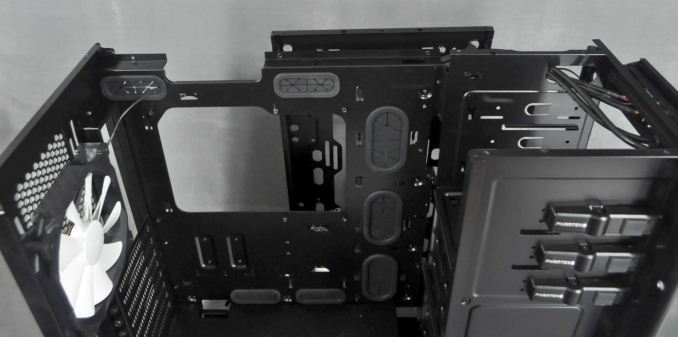
It would seem that many companies are trying to diversify towards computer cases lately. Most of them originally are manufacturers of power and cooling products, but there are companies that began as GPU and RAM manufacturers as well. However, marketing case products can be very tricky. Functionality and value might not as important as aesthetics, depending on who you talk to. Today we are going to have a look at a case from Phanteks, a Dutch company whose high performance cooling solutions quickly made them very popular.
The Phanteks Enthoo Pro
Phanteks made a successful entry into the case market with the Enthoo Primo that we reviewed a year and a half ago. The Enthoo Primo was an excellent high-end case, although it came with a very hefty price tag. After their first successful attempt the company released a few more designs aiming to move a greater number of customers. All of the cases share the same series name "Enthoo" - not an actual word or name in any language based on the Latin alphabet but actually half the pronunciation of the word "enthusiast" (en-thoo-zee-ast). Today we are going to have a thorough look at their currently most popular case, the Enthoo Pro. The Enthoo Pro is a case designed for maximum cooling and versatility but retails for $90 (solid side panel) / $100 (window side panel), less than half the retail price of the Primo.
11.2oz coke can for size comparison| Phanteks Enthoo Pro Specifications | ||
| Motherboard Size | EATX, ATX, Micro-ATX, Mini-ITX, SSI EEB | |
| Drive Bays | External | 3 x 5.25" |
| Internal | 6 x 2.5"/3.5" (internal drive cages) 1 x 2.5" (SSD Bracket) |
|
| Cooling | Front | 1 x 200mm (included) 2 x 120mm/140mm (optional if stock fan is removed) |
| Rear | 1 x 140/120mm (one 140mm included) | |
| Top | 3 x 140/120mm or 1 x 200mm (optional) | |
| HDD | 2 x 120mm (optional) | |
| Bottom | 1 x 140mm or 2 x 120mm (optional) | |
| Radiator Support | Front | Up to 240mm |
| Rear | 120mm/140mm | |
| Top | Up to 360mm/420mm | |
| Side | - | |
| Bottom | Up to 240mm/140mm | |
| I/O Port | 2x USB 3.0, 2x USB 2.0, 1x Headphone, 1x Mic | |
| Power Supply Size | ATX | |
| Clearances | HSF | 193mm |
| PSU | - | |
| GPU | 347mm (472mm if HDD cages are removed) | |
| Dimensions | 535 mm × 235 mm × 550 mm (H×W×D) 21.06 in × 9.25 in × 21.65 in (H×W×D) |
|
| Prominent Features | - Extreme cooling capacity - 2 included Phanteks’ premium fans - The PWM hub makes it possible to control all the connected fans (also 3-pin fans) with PWM function through 1 PWM connector and create a better cable management. - Extensive water cooling support. Provides up to 4 different installation areas for slim and thick radiators varying from single to triple (120mm and 140mm form factors). Clearance for push-pull fan configurations. - Innovative liquid cooling mounting systems: radiator brackets for easy installation - Closed HDD panel strengthens the chassis’ rigidity, even when both HDD cages are removed. - Removable Drop-n-Lock SSD bracket that can be installed on 2 different locations. (1 bracket incl.) - Removable dust filters for easy maintenance. - Pre-installed cable management tools behind the motherboard tray that can be fastened and released. - 2x USB 3.0, 2x USB 2.0, microphone, 3.5mm audio jack |
|
| Price | $90 (solid side panel) / $100 (window side panel) | |
Packaging and bundle
The packaging of the Enthoo Pro is simple with just a basic schematic of the case printed on the brown cardboard box. Inside the box, a nylon bag and astonishingly thin polystyrene foam slabs provide protection. Although we believe the aesthetics of the packaging to be unimportant, the functionality is in contrast quite importiant. Unfortunately, the packaging is far too basic for a case of this size and weight. The sample for this review received significant damage on its way to us, as the thin foam slabs had crumpled and the case was literally floating inside the box. The purchaser should always check the condition of the case before accepting its delivery.
Phanteks did an excellent job with the bundle of the Enthoo Pro. It may not be overly rich but is very well presented, with the screws and mounting hardware in a compartmentalized box. There also is a plate for the mounting of cooling systems, a few cable ties, two cable straps of different length and a very good manual.
The Exterior of the Phanteks Enthoo Pro
Phanteks based the Enthoo Pro on a postmodern design, using basic geometric shapes and straight lines. It is a relatively simple and elegant case with a metallic brushed faceplate, coming across not too minimalistic but not extravagant either. Only the double window left side panel is spoiling the seriousness of the Enthoo Pro; users that want a more subtle appearance should opt for the version with the solid panel. Measuring 53.5cm tall and 55cm deep and with a volume of 0.0691m3, the Enthoo Pro is a rather large and bulky case, which is to be expected from a tower capable of housing EATX motherboards.
When seen from afar, the brushed metallic appearance of the faceplate and its 5.25" bay covers generate feelings of sturdiness and quality, making it perhaps the most important stylistic feature of the Enthoo Pro. Regrettably, that is nothing more than an illusion, as the faceplate is plastic that has been treated to look as if it is metallic for aesthetic purposes alone. Nevertheless it is fairly strong and sturdy and of quality on par with the price of the case. The faceplate of this sample was seriously damaged during its transportation, half due to the poor packaging and half due to the "overzealous" courier company.
Nearly half of the faceplate is covered by a metallic mesh, with extra ventilation holes at both sides. Four solid metallic 5.25" covers dominate the top half of the faceplate. There are actually only three 5.25" bays available for devices as the top 5.25" cover is a door hiding the front I/O ports (two USB 3.0, two USB 2.0 and 3.5mm headphone jacks) and the reset button. The oval power button is at the top of the case, near the front, surrounded by an LED light.
The rear of the case reveals the black chassis of the Enthoo Pro and that the PSU compartment has been moved to the bottom of the case, which is common for high performance designs nowadays. Thumbscrews with rubber rings hold the side panels in place and the reusable expansion slot covers are vented.
Nearly the entirety of the Enthoo Pro is focused on cooling - ventilation openings and fan mounts can be seen virtually everywhere. Six tall sturdy feet on the bottom elevate the case significantly, as the bottom of the case hosts the PSU fan intake and ventilation openings where two 120mm fans or a single 140mm fan can be installed. Separate nylon filters cover the PSU intake, the bottom and the front ventilation openings. Most of the surface of the top panel is covered by a metallic mesh as well, with three fan mounts behind it, but there is no filter. This is what we would expect to find as these openings are intended to function as exhausts.
The Interior of the Phanteks Enthoo Pro
Phanteks placed a lot of thought and resources while designing the interior of the Enthoo Pro. With the exception of the white stock fan blades, everything else in the case is black. A very wide opening on the motherboard tray allows for the installation of advanced CPU coolers without having to remove the motherboard. The opening is so large that if the user were to install an ITX motherboard, the board would barely cover about 60% of it, leaving a large gap to its right side. Flex-ATX and Mini-ATX motherboards will leave a small opening to their right as well. Many cable openings surround the motherboard tray, all covered with rubber grommets.
A cover for the PSU compartment is a rare addition. It has no real function other than the aesthetic upgrade but it is certain that modders will appreciate its presence. The compartment has two openings, a large one on the motherboard tray and a smaller one at the front of the cover, both covered by rubber grommets. The PSU sits on six soft feet that will absorb any vibrations. The installation of the cover is optional, allowing the user to showcase their PSU or install it with its fan facing upwards if need be, as well as to make compatible the case with fanless PSU designs.
Another interesting feature of this case is the mounting points of the fans. Most mounting points do not have screw holes but "rails", allowing the adjustment of the fan's position. The most visually obvious example is the mounting point of the rear 140mm fan, which allows the fan to move as much as four centimeters higher than its original position. This is true for every fan mounting point of the case - only the movement tolerance differs.
A large metallic wall conceals the two HDD cages and forms the three 5.25" bays. Plastic mechanisms lock the 5.25" devices in place and screws can be used for a more permanent installation. A metallic badge with the company logo can be seen near the bottom of the wall and that will be virtually the only thing visible from the front window of the side panel. The HDD cages can be removed to increase the clearance for expansion cards from 34.7cm to 47cm; however, the sidewall may be blocking the power connectors of the card if they are on the side.
The two HDD cages are removable from the right side of the case. Each cage can hold up to three devices, which can be either 3.5" or 2.5" drives, and has a foam pad at the rear to ensure that no vibrations are being transferred to the sidewall of the case. The drive trays are interesting, offering tool-less installation for 3.5" drives via winged pegs that snap at the sides through anti-vibration rubber rings. Optionally, screws can be used to secure 3.5" drives on the tray. The use of screws is obligatory for 2.5" devices, which obviously cannot be secured using the winged pegs.
The rear of the motherboard tray is spacious and outstandingly well designed. Phanteks installed cable ties across the two cable paths that should reduce the time of cable management significantly and keep everything very tidy. The only problem is that the CPU 12V power cable needs to be very long (or an extension needs to be used) in order to reach the top left side of the motherboard.
Two 2.5" drive trays can be installed to the right side of the case but only one tray is supplied and the second is optional - which is very strange, as the cost of a metallic tray should be very small compared to the hassle this creates for everyone that has more than one SSD. A very basic but usable fan controller can be seen as well, which may be used to control up to six cooling fans, including that of the CPU cooler.
The fan controller connects to the CPU fan power header and, essentially, it just copies the PWM signal of the CPU fan header and uses it to adjust the speed of five more fans. It requires additional power from a SATA connector. This approach may be a little dangerous, as it controls the speed of the connected fans using the PWM signal of the CPU header alone - if the CPU is being kept cool by a very advanced cooling system, connecting fans that cool other components or all of the case's fans to the controller could result to overheating or stability problems.
By far the greatest feature of the Phanteks Enthoo Pro is nothing else but the chassis itself. The panels and parts of the chassis are not permanently bolted to each other - screws are holding the case together and it can be dismantled entirely if needed. For the average user, the ability to dismantle the case probably means nothing; however, this is a very rare ability that will surely drive the imagination of modders wild.
Black cables and parts are easily hidden inside an all-black chassis; therefore, for visual clarity, we are using an AX760i PSU with a red cable pack and white SATA cables for our pictures. Building a system inside the Phanteks Enthoo Pro is a very easy, as the case is very spacious and the cable management becomes an admirably easy process. It takes no more than a few minutes to assemble a basic system inside the Enthoo Pro, but we feel that its spaciousness will mostly be appreciated by those with systems that are more complex. We could not find any sharp or otherwise dangerous spots in or around the Enthoo Pro during our experience with it.
There is plenty of clearance between the components and parts of the case, allowing the cables to turn without too much tension and providing enough space for the installation of AIO cooler radiators. With a little careful cable routing, even an amateur can easily build a very tidy and visually pleasing system. The only concerning issue is the required length of the 12V power connector. As seen from our pictures, the cable of the AX760i was not long enough to reach the top right side of the motherboard, even though we ignored the predetermined cable path and went for the opening in a straight line. An extension cable is likely going to be necessary for the majority of users.
Test setup
Professional testing requires the emulation of real-world situations but with repeatable results; thus, a perfectly controllable test setup and environment are required, especially for comparable results. Testing the thermal performance of any case with a typical real-world setup technically limits the comparability of the results to this setup alone, as an active system interacts with its environment and the change of a single component would alter myriads of variables. As such, we developed synthetic loads that emulate the thermal output of real systems, which however are passive, steady and quantifiable. As such, the thermal testing now displays the thermal capabilities of the case alone, as if it would have to deal with the entire thermal load by itself, regardless of the system that would be installed inside it. Laboratory data loggers are being used to monitor the PT100 sensors and control the safety relays, which are fully accessible via our custom software. Three such loads have been developed; the ATX version simulates a 200 W CPU, 50 W VRM, 30 W RAM and 4 × 120 W GFX card thermal load. Finally, three 3.5" HDD dummy loads have also been created, with each of them converting 30 W of electrical power to thermal, bringing the total thermal load of the ATX test setup up to 850 Watts. As such, the thermal load is immense and only the best of cases will be able to handle it for more than a few minutes, we are also performing a test with a thermal load of 400W, with all of the aforementioned components except the HDD drives at about 42% power, which is more suitable for the majority of cases.
Thermal testing has been performed with the stock fans operating at maximum speed. Noise testing has been performed with a background noise level of 30.4dB(A). Advanced noise testing is also being performed, in order to assess the ability of the case to dampen the noise of the components installed inside it. This includes the installation of two noise-generating sources (strong fans) inside the case, one positioned approximately over the first expansion slot and one over the CPU area, which generate ≈ 44.2 dB(A) when unobstructed. During the advanced noise test, all stock cooling options of the case are entirely disabled.
Results and discussion
Even though the stock thermal performance of the Enthoo Pro is not going to set any performance records, Phanteks' design can compare with other cases of similar size that are aimed at the same group of consumers. It outperforms the similarly priced XFX Bravo Type-01 and it falls a little behind the Corsair Graphite 760T, which however is currently retailing for nearly twice the price of the Enthoo Pro. The thermal performance of the Enthoo Pro is almost identical with that of the Corsair Obsidian 450D, a more expensive and considerably smaller case.
The stock cooling fans are meant to compromise between thermal performance and comfortable acoustics, meaning that they are neither too strong nor entirely silent, yet they manage to keep the temperatures within acceptable levels without generating too much noise. They are audible at their maximum speed but the noise level is borderline comfortable for home users. Their noise levels drop significantly at lower speeds, making them nearly inaudible at 50% speed. With the PWM fan controller present in the Enthoo Pro, these fans should maintain negligible noise levels while the system is performing casual everyday tasks and turn audible only when the processor load increases significantly, such as during gaming.
The Enthoo Pro is a case that has been designed for cooling performance. With so many openings, its capability to reduce the noise generated by components inside the case is very limited. It managed to reduce the noise coming from our artificial noise source by 1.6db(A), a measurable figure but nevertheless this change is imperceptible by ear - the vast majority of humans can differentiate between noise sources only if there is a change of at least 2.5dB(A) (most require a change of at least 5dB(A) to notice the difference).
Conclusion
Phanteks designed the Enthoo Pro to be "beautifully crafted, amazingly flexible, budget friendly and with maximized cooling potential". Of course, it is next to impossible for a product to excel at everything, such as appearance, versatility, quality, performance and value all at the same time. The balance of these five aspects is what actually matters. To that end, we feel that Phanteks hit the nail on the head with the Enthoo Pro, as all five of the main characteristics that define a case are in balance with each other.
Aesthetics are a subjective matter and each person should select a case based on his/her own preferences, in conjunction with the environment that the case will be installed. The Enthoo Pro is a large tower with fairly subtle, modern design; most people should find it sufficiently appealing for their gaming systems and workstations. Although the front panel is actually plastic, its metal-like appearance adds style that only an expert can spot without getting too close. Only the dual side panel window makes the Enthoo Pro a little too "aggressive", while its presence is questionable because of the front window being right on the metallic sidewall, but those seeking a more elegant appearance can select the solid side panel.
The thermal performance of the Enthoo Pro may not be stellar but it certainly is on par with the competition. With just its stock cooling fans, the Enthoo Pro can match and outperform other similarly priced and or sized cases. Even without extra cooling options, the Enthoo Pro can keep a very powerful system sufficiently cool and stable. Also, not only there are numerous slots for extra fans and radiators, but their installation positions are not fixed - they can be shifted on their installation rails, lifting compatibility and versatility even higher.
Finally yet importantly, the Enthoo Pro makes a good compromise between quality and price. Phanteks designed the case well, the materials are very good and the frame is very sturdy, especially if one considers that the chassis can be dismantled. The Enthoo Pro currently retails for $100 with a window, as the one presented in this review, or for $90 with a solid right side panel - shipped. For the features, quality and versatility of the case, its retail price is very competitive, making a high performance, spacious and modular case affordable to the advanced user and seasoned modder.
It is crystal clear that the Enthoo Pro is a great asset for Phanteks - not for its appearance, features or even performance, but for the roomy interior and its modular chassis. The Enthoo Pro is not too expensive, large or complex, yet it is spacious and versatile enough to be a modder's dream case. If the appearance of the Enthoo Pro pleases you and you want a spacious, adaptable and fairly priced case, it should easily find its way among the first places of your shortlist.

